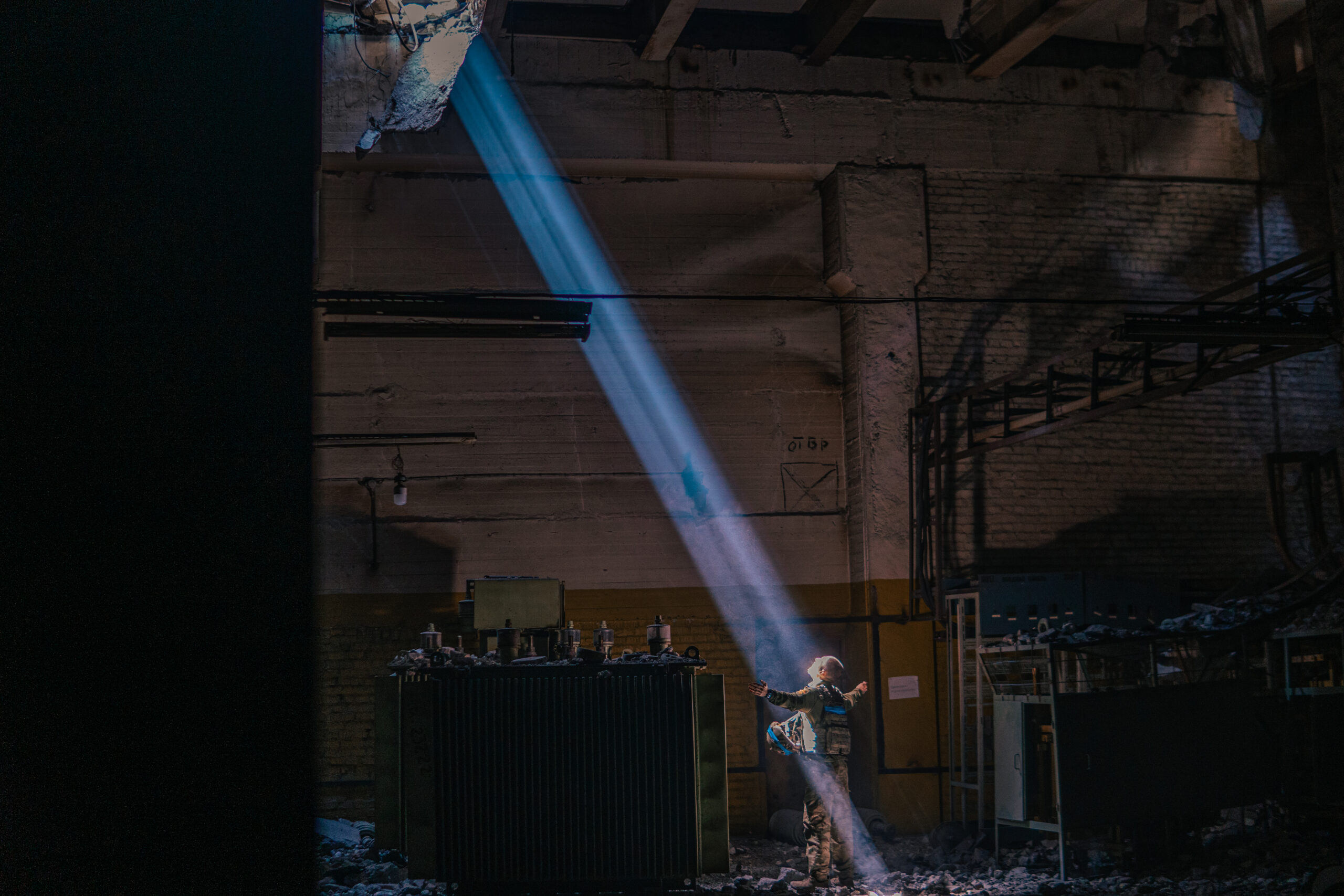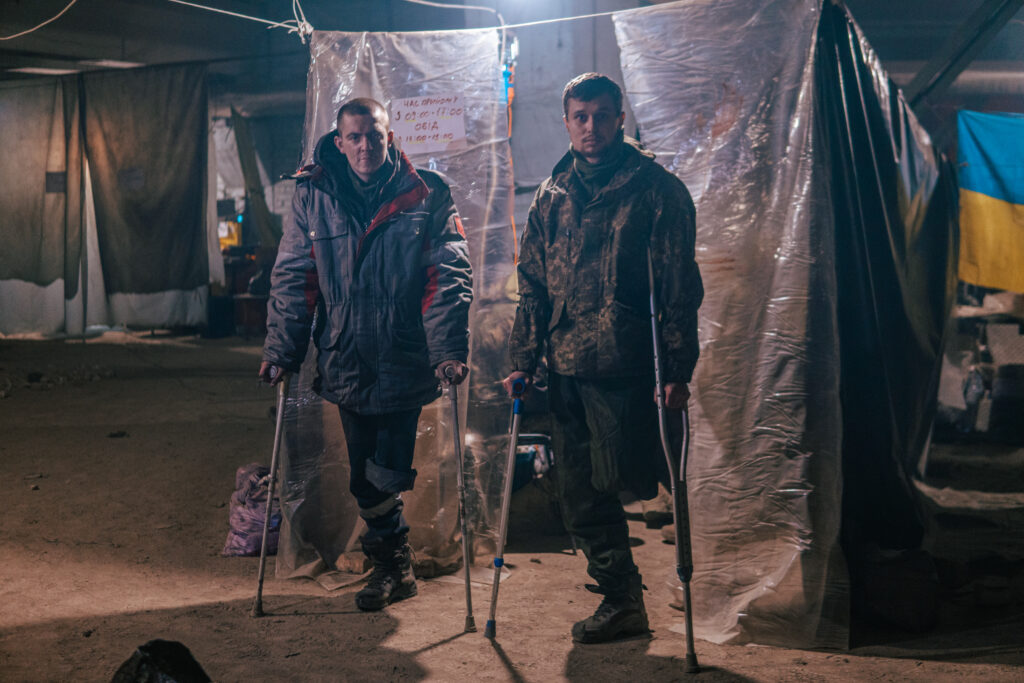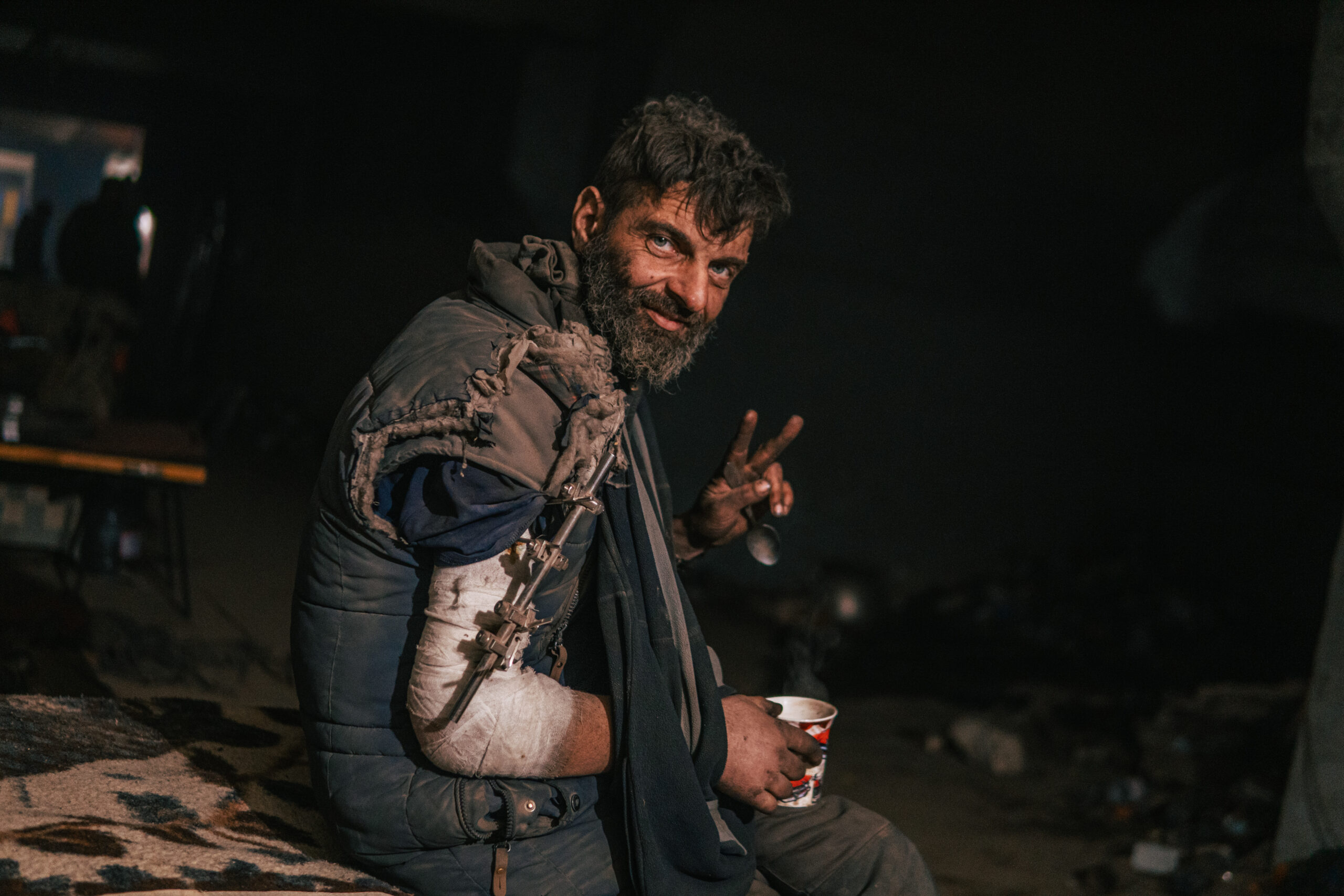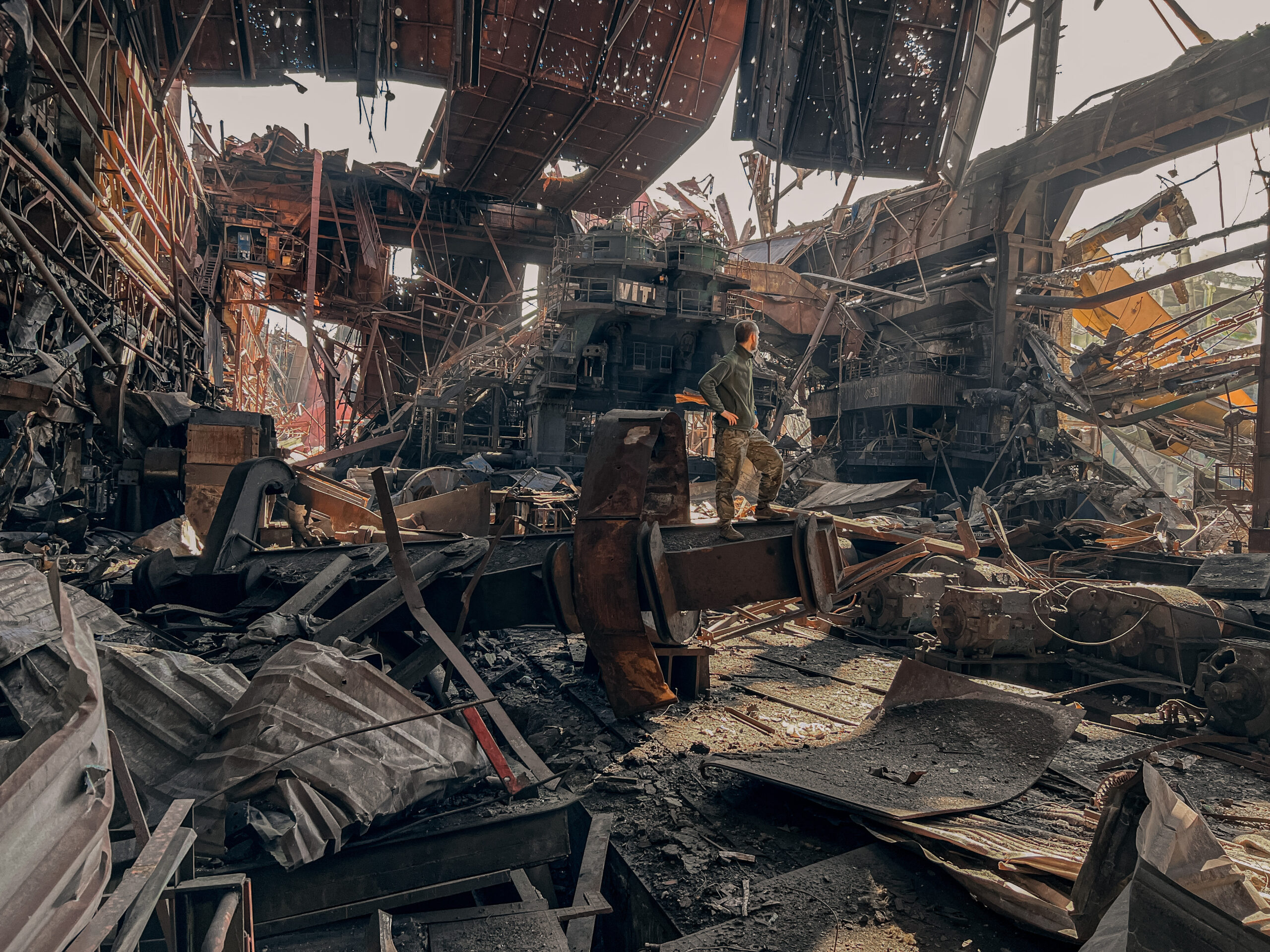
After Ukraine’s victory in Eurovision Song Contest 2022 with the Kalush Orchestra calling on the whole world to help the Ukrainian defenders blocked in Mariupol, Google searches for “Azovstal” and “Azov” increased several times. However, from the Wikipedia article in English “neo-Nazi unit of the National Guard” to the articles of Christopher Miller, Buzzfeed and RFE/RL journalist, calling Azov not only than “far-right force” and “nationalist hate group”, – the information space shifts the focus from Azov’s heroic defense of Mariupol to the narratives beneficial for the Kremlin.
For more than 80 days, Ukrainian service members have defended the besieged port city of Mariupol and its civilians, blocked on the under Russian bombs, artillery fire, and missiles while the whole world was demanding their extraction from the Azovstal steelworks plant. On May 16, the evacuation of Ukrainian defenders agreed with the Ukrainian high command, finally started. 264 soldiers were evacuated to hospitals in Russian-occupied Novoazovsk and Olenivka for medical treatment. Now, an exchange procedure needs to be carried out to return them home. And Russian propaganda is incessantly working to denigrate them.
Constructing the discourse about “Ukraine’s Nazi problem
For 8 years, Moscow has been consistently trying to legitimize the discourse about “neo-Nazies in Ukraine”, and Ukrainian military, first and foremost, the Azov regiment (as well as many Ukrainian volunteer battalions) became the main target. In 2014, the focus of Russian propaganda was on the Right Sector Battalion, and in 2022 it changed to the Azov. And, truth to be told, the Kremlin had successfully chosen one of the most sensitive subjects for the West – the problems of nazism and white supremacy and did everything to stigmatize the Azov regiment, systemically portraying them as a “far-right” and “extremist” paramilitary group.
Created on May 5, 2014, the Azov unit started as a militia of volunteer fighters who united to fight pro-Russian forces backed by Moscow in eastern Ukraine after Russia occupied Crimea. The Azov Regiment became famous after helping Ukraine recapture Mariupol in 2014. From then on, Mariupol became a permanent Azov base. Usually, the propaganda narrative about the “nazi” regiment revolves around the personality of its founder, Andrii Biletsky, known for his far-right ideas, and the logo resembling a “wolfsangel” symbol. However, technically, Biletsky was Azov’s leader for several months only since in September 2014, the Azov Battalion was reorganized, and a regiment was created on its basis. The regiment was then integrated into Ukraine’s National Guard (internal military force). As any military unit, it does not express any ideological principles except for defending its country since Ukrainian legislation prohibits political activity for the military.
Biletsky, for his part, chose the exact political way, having created his own “National corps” political party and tried to use the image of Azov for his reputational benefit in the parliament. However, this still does not make the Azov the “military wing” of any political party, and certainly does not make it “nazi” or “far-right” as well. During the parliamentary elections in 2019, Biletsky’s party only won 2.16% of the vote, and Biletsky lost his seat in parliament, which once again proves the low level of support for far-right parties in Ukraine and makes Russia’s claims about “nazi Ukrainian government”even more absurd.


Anyway, in a commentary to CNN in March 2022, the Azov regiment said it “appreciates and respects Andriy Biletskiy as the regiment’s founder and first commander, but has nothing to do with his political activities and the National Corps party“.
Since 2014, the regiment’s personnel has completely changed, and now people of Greek, Jew, Crimean, and Russian origin serve in Azov. Ironically, most of them are Russian-speaking, so another Russian accusation about “discrimination of Russian-speakers” does not work. Here is how Sviatoslav Palamar (call sign “Kalyna”), Azov’s Deputy Commander comments the „nazi” accusations in his appeal:
„…in the ranks of Azov, soldiers are fighting with amputated legs, on prostheses, with four wounds… They, just like Mariupol, which was shelled by the occupiers but is still alive and full of love for freedom. I ask you not to confuse the concepts of patriotism and Nazism. Patriotism is when you love your mother more than the mother of your neighbor. This is when you love your land more than the one that gives a better harvest. When for you, your people are the best in the world. When you defend your country and don’t attack others. Our military has never invaded Georgia, Chechnya, Transnistria, or Syria. We have never tried to seize foreign lands, but we have to confront the real Nazis of the XXI century. Not just Putin. Admit it-it’s not him shelling hospitals, it’s not him – an artilleryman who destroys homes, burying people alive”.
A “Nazi” myth aimed to justify Russian aggression
All Russian myths about Azov, unfortunately for Ukraine, also unintentionally parrot Kremlin propaganda and help legitimize the Russian invasion of Ukraine. While for Ukraine and the whole civilized world, Azovstal defenders became the symbol of invincibility, for Russia they are a symbol of defeat. Portraying an official part of the National Guard of Ukraine as “nazies”, and even blaming it for the Bucha massacre and blowing up the Mariupol drama theater, Moscow marks all Ukrainian military as “far-right”, “extremist” and “intolerant”. However, when it comes to Ukrainian LGBTQ+ organizations donating money to Azov, Russian propaganda remains silent, as well as it ignores the fact of Russian neo-nazis fighting against Ukraine right now. How does it correspond with a declared mission to protect Russian speakers from Ukrainian ”neo-Nazis”?
From the very beginning of Russia’s full-scale war in Ukraine, Russia mentioned the existence of the Azov Regiment as one of the main reasons for its “special military operation to denazify Ukraine.” While Russia, having a tremendous advantage in equipment and number of troops, was unsuccessfully trying to gain control over Mariupol to get a land bridge linking the occupied territories with Crimea, men and women from Azovstal proved they have been truly made of steel. Azov became not only the symbol of Ukraine’s fierce resistance but also a symbol of Russia’s weakness. Azov’s strong motivation and determination have always caught the attention of Russian propaganda, so disinformation attacks on the regiment have not stopped since 2014.

Trying to “save the face” of its bloody regime and get at least a metaphoric “victory over nazism”, Russia is doing everything possible to demonize and discredit the captured defenders of Azovstal. While the Kremlin has officially stated they would be treated in line with international norms, some Russian lawmakers have already accused them of war crimes and one said they should face the death penalty. Moreover, Denis Pushilin, the leader of the puppet “Donetsk People’s Republic”, has already said that Azovstal defenders are being held on the territory of the “republic” and will face an “international tribunal” there. The death penalty is commonly used in the “DPR”, which is a violation of all fundamental principles of the right to a fair trial. Anyway, after 8 years of feeding the Russian people the “neo-nazi Azov” narrative for years, it would be hard for the Kremlin to justify the death of thousands of Russian troops during the siege of Mariupol by just agreeing to the exchange procedure.
For Putin, there is no difference who to mark as “neo-nazi”: from the members of the Ukrainian president who is of Jewish origin to the Israel government for “supporting neo-nazism”, which Russia’s foreign minister blamed for “Hitler’s Jewish blood”. Every day, Russia is more and more entangled in its lies and propaganda, but every day is also worth up to 100 lives of Ukrainian heroes. And that is why Ukraine does not have an option to surrender and the world should support and remember Ukrainian sacrifice.

